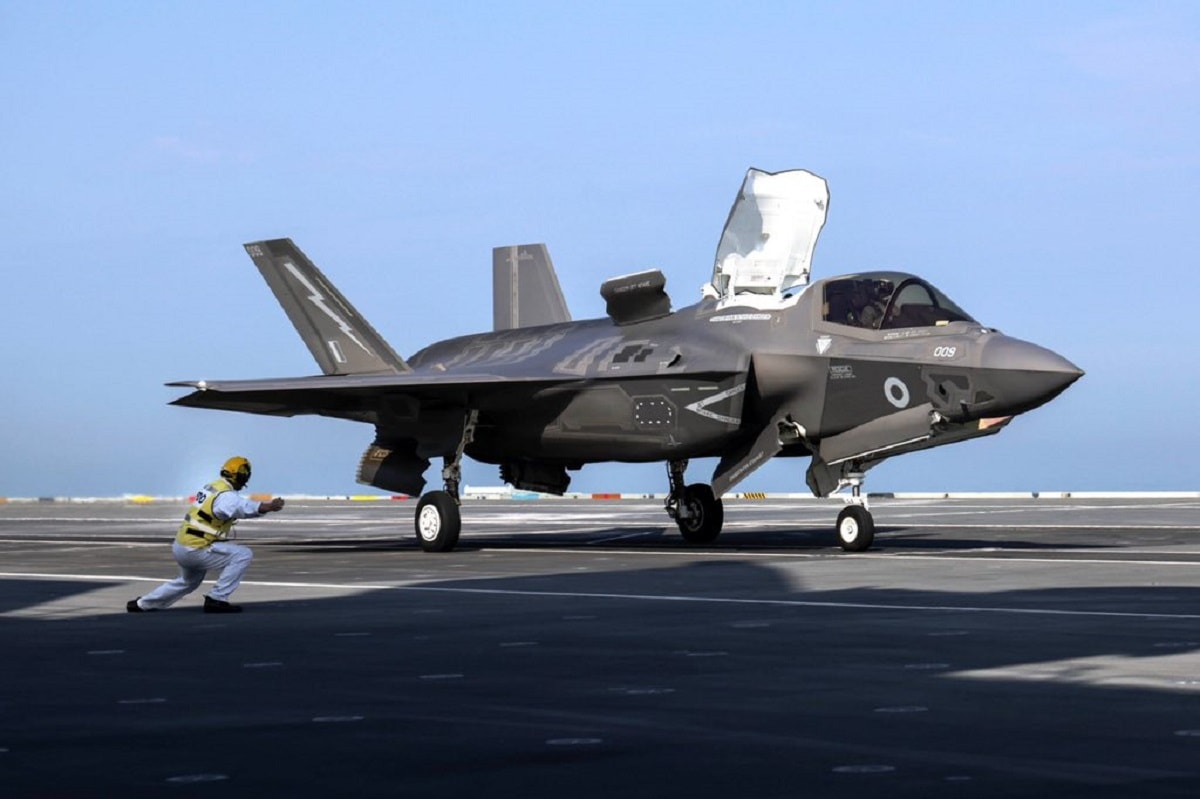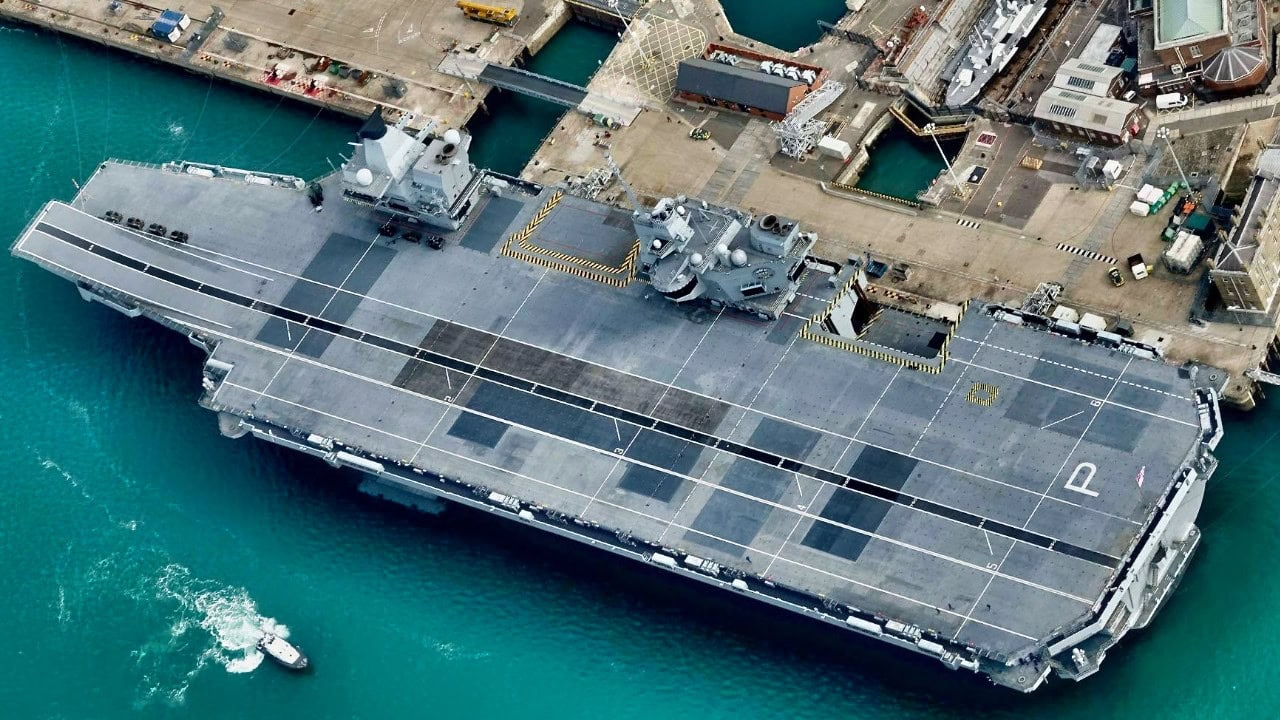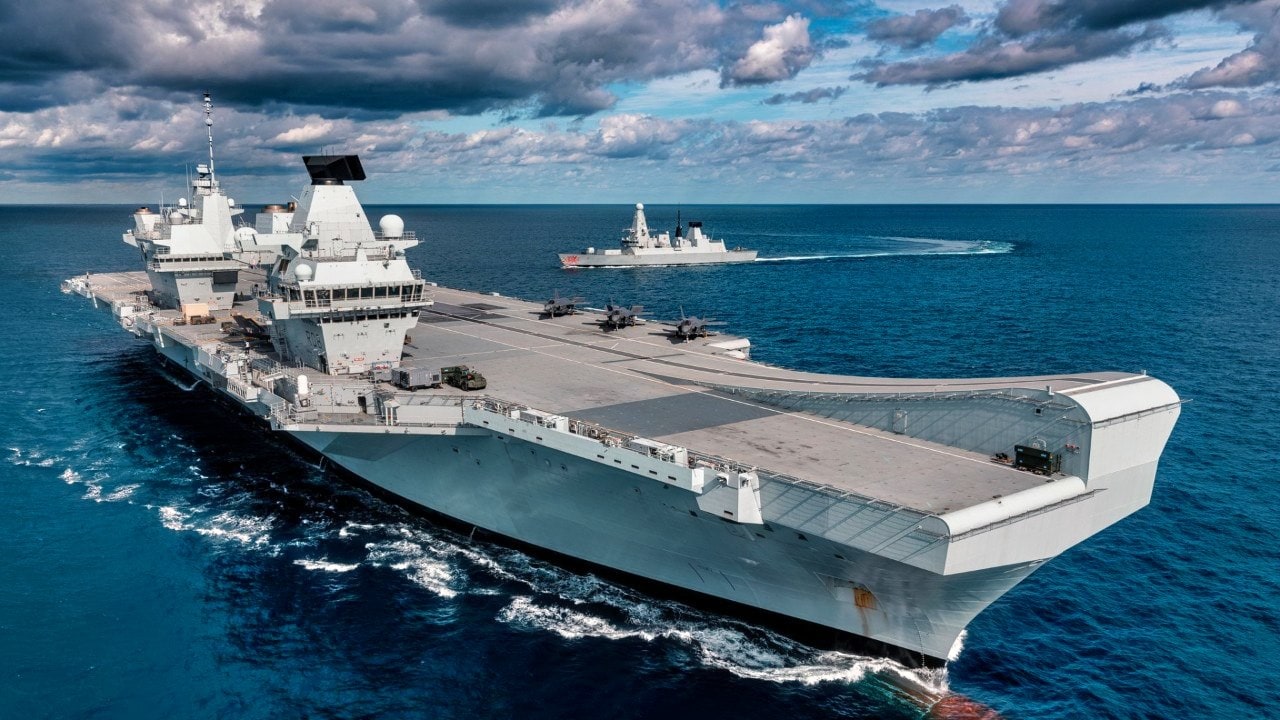The British Royal Navy now has two Queen Elizabeth-class aircraft carriers. However, could one be for sale someday in the future?
A report from a year ago in the Daily Mail cites sources indicating that, indeed, the UK may “sell” its HMS Prince of Wales carrier to save money due to deliberations among members of Britain’s Maritime Enterprise Planning Group, a UK future planning and strategy group.
The possibility could be to sell the $3.5 billion (Euro) aircraft carrier to the US, Australia or perhaps some other allied Navy.
A source cited in the Daily Mail says this Maritime Enterprise Planning Group is aware that the Royal “Navy is struggling to maintain operational commitments and has to expand the fleet as rapidly as possible.”
Apart from fully selling the carrier, the UK Royal Navy could move to “share” the carrier with allied forces such as the UK and US, thereby lowering acquisition and maintenance costs.
Final decisions have yet to be made, and many proponents of the UK Royal Navy are likely arguing to “keep” the carrier for the force.
While in the year that has passed, it seems clear the Queen Elizabeth-Class aircraft carrier was never put up for sale, however, questions do remain about these warships, and if the Royal Navy is up to the task of caring for them and using them in combat scenarios.
Would the Royal Navy Really Sell a Prized Queen Elizabeth-Class Aircraft Carrier?
Given the success of the first HMS Queen Elizabeth, there are clear reasons why the UK would be well-served to keep and arm HMS Prince of Wales.
While it might be a controversial opinion, one could argue that the Queen Elizabeth carrier is performing well and, according to numerous public reports, is likely heralded by senior UK government and the Royal Navy members.
Part of the value of the Queen Elizabeth pertains to its ability to interoperate with allied carriers and operate F-35Bs.
The British carrier has, on several occasions, hosted US Marine Corps F-35Bs flying from amphibious assault ships and its F-35Bs have shown they can land on US Navy warships.
Russian Threat
It might be essential for the UK to operate two of its Queen Elizabeth-class carriers given the growing threat to Europe from Russia.
With a second carrier, the UK could more easily defend its waters and project power into the Baltic Sea, a point from which it could hold Russia at risk.
In this scenario, a UK-owned HMS Wales could operate very far away from its home country and still leave Britain with an operational carrier at its disposal from its own shores. The growing importance of NATO in Europe is yet another reason why it might make sense for the UK to operate another carrier, given that most other European nations do not have a carrier
F-35B Synergy and Queen Elizabeth-Class
This degree of interoperability is a massive force multiplier because it can extend the F-35-enabled targeting and attack sphere across a more expansive theater of operations.
Part of this relates explicitly to the F-35s universal datalink called Multifunction Advanced Data Link (MADL), which enables all F-35s from any member country to seamlessly and securely share time-sensitive, real-time information across multi-national formations.
This F-35B alignment also means that a new British carrier could quickly and almost immediately operate alongside and in coordination with US and Australian carrier-strike groups.
A carrier from each country could function as an F-35 “node” across a dispersed, multinational formation. This international F-35 dynamic could expand even farther across Europe due to the growing number of participating nations.

Image: Creative Commons.
The Queen Elizabeth-class carriers operate with a ski-jump deck and might be unable to accommodate an F-35C, which needs a catapult and runway.
However, given the distances between the UK and the oceans and coastlines across Europe, UK carrier-launched F-35Bs could easily interoperate with land-launched Polish and German F-35s. This is also a force- multiplying attack dynamic that enables allied European countries to expand any potential air campaign throughout the continent greatly.
Shared Aircraft Carrier HMS Prince of Wales?
F-35 fortified multinational interoperability is also a strong reason why it might make operational sense for the carrier to be “shared” between the UK, Australia, and the US.
Australia is an F-35 country, so a trilateral carrier with all three countries could prove extremely valuable and easy to operate.

Royal Navy HMS Prince of Wales Aircraft Carrier. Image Credit: Creative Commons.
The carrier could forward position itself for months docked in Australia, the UK, or anywhere along the US coastline, enabling any of the three countries to “flex” maritime attack capacity for any of the three countries as needed.
About the Author: Kris Osborn
Kris Osborn is the Military Technology Editor of 19FortyFive and President of Warrior Maven – Center for Military Modernization. Osborn previously served at the Pentagon as a highly qualified expert in the Office of the Assistant Secretary of the Army—Acquisition, Logistics & Technology. Osborn has also worked as an anchor and on-air military specialist at national TV networks. He has appeared as a guest military expert on Fox News, MSNBC, The Military Channel, and The History Channel. He also has a Masters Degree in Comparative Literature from Columbia University.

